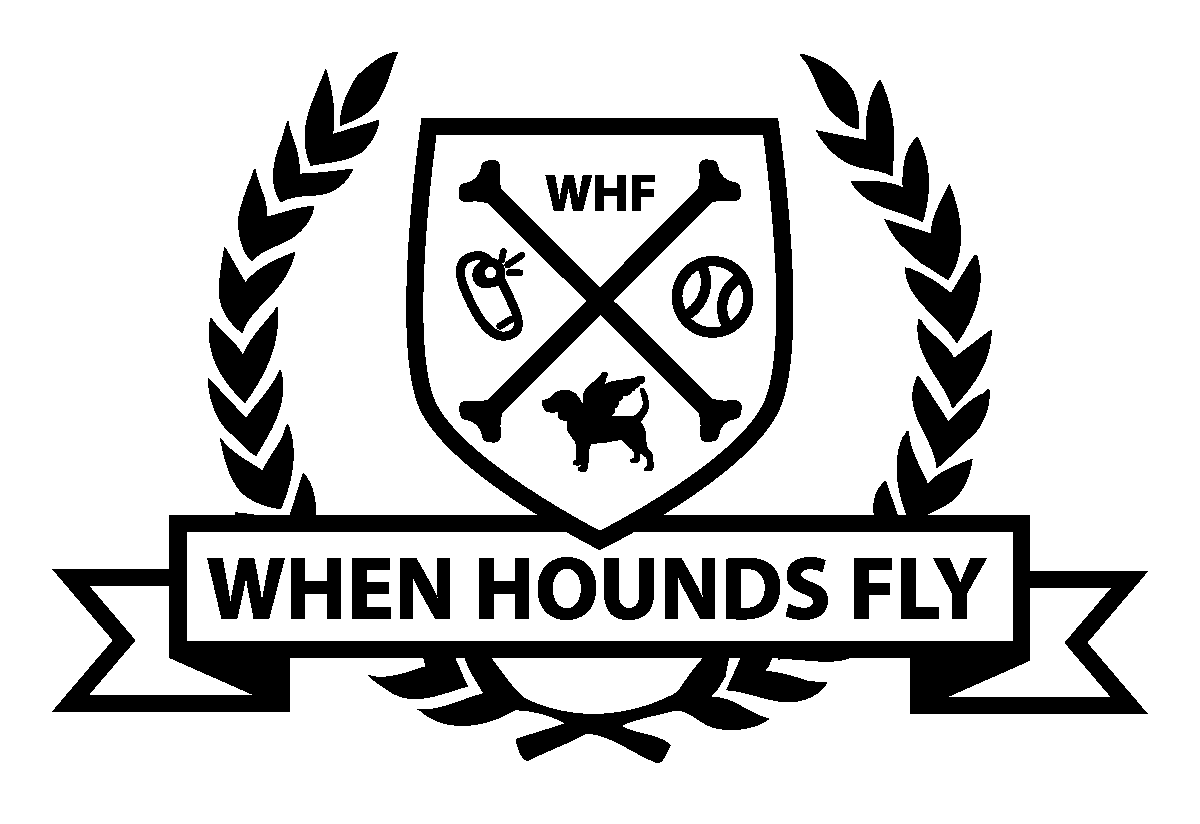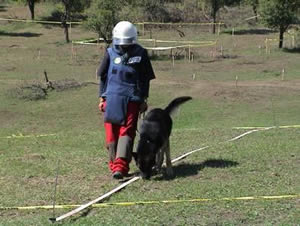(This is the next blog post on interesting things I learned from the recent PABA Conference at the University of Guelph. See Part 1 to learn about it plus Dr. William “Deak” Helton.)
Before I begin let me confess two things: One, I absolutely love watching Schutzhund. I say watch because 1) I’ve never trained bitework or tracking 2) I don’t really own a dog that’s “suitable” for it. I think I like it for the same reason I like participating in triathlons. I just think it’s amazing for a single athlete to excel in multiple disciplines.
Two: While I am training my Beagle-mix Petey for Rally Obedience, I do have an eye to the future, so it’s no surprise to my friends I one day want a Malinois or Tervuren. Objectively they just look cool (see Hannah Branigan and Gambit):
But besides looking cool… why do I want one? Why do I need one? Dr. Helton’s lecture on working dogs also included QUITE a bit of interesting information on Breed Intelligence/Trainability and the overall Selection Template for working dogs. Maybe I don’t need a Belgian Shepherd after all?
Stanley Coren’s Rankings (1994)
His book, “The Intelligence of Dogs” suggested that Border Collies, Poodles, German Shepherds, Golden Retrievers, and Dobermans were the most intelligent and…
Afghans, Basenjis, Bulldogs, and Chow-Chows were the least intelligent.
Most dog enthusiasts have heard of the book, but what you may not know is how the rankings were achieved. It was from surveying AKC and CKC judges for their personal opinions about dog breed intelligence. Not exactly objective or quantifiable data.
Dog Sports Data Holds Answers
Helton went to the world of dog sports to seek out data. Competitive sports of any sort is useful for scientists as a) everything is measured and data is accurately tracked and b) scoring and timing is consistent since that’s required for fairness and honesty in competition.
Going to agility, he found two interesting facts:
- Precision (frequency of faults) was equal across all breeds, assuming level of practice and experience of dog and handler were equal
- Speed (time through course) was better for “elite breeds”
No mystery there – Border Collies are designed to move fast. But, all dogs can be trained to have reliable contacts or enter weave poles accurately.
Scott and Fuller – A Better (and Older) Study:
So let’s forget about Coren. Instead let’s look to Scott and Fuller:
“We can conclude that all breeds show about the same average level of performance in problem solving, provided they can be adequately motivated, provided physical differences and handicaps do not affect the tests..” Scott and Fuller (1965, p.258)
Physical Characteristics Are Key:
So, if all breeds are generally equal in intelligence, then it’s the physical traits of the dogs we should be focused on.
If you’re looking for speed, we’d want a dog like a Greyhound. They are built for running.
If you’re looking for a fighter, we’d want a dog like a Pitbull. They are built for fighting.
Here are a few other considerations:
Size and Thermoregulation – dogs that are too large will overheat; dogs that are too small will freeze. That’s why sled dogs are pretty small – they are designed to dissipate heat while sledding long distances.
Ocular Overlap – Dogs with eyes spread far apart (sighthounds) have less visual acuity in the centre, but are designed to see the horizon. Dogs with more centre-set eyes have more acuity in the centre and see less on the peripheral. These dogs can see what’s in front, and as a result, are more focused on what’s in front of them, and less distracted by things happening on the horizon – obviously making them less distracted during training.
Built for Speed vs Built for Biting: the broader, wider mouths of dogs like the Pitbull are designed to cause maximum damage during biting, whereas the mouth of a Greyhound would deliver far less bite strength.
The Goldilocks Rule
But, historically, dogs serve many purposes, and the most useful ones do multiple tasks well (going back to Schutzhund – obedience, tracking, and protection). So trainers have a bias towards dogs that aren’t too big, aren’t too small, are fast enough, but can kick ass enough. (German Shepherd!) Helton suggests its no wonder why all the dogs favoured by the AKC and CKC judges are all roughly the same size, shape, and even generally have similar shaped heads.
Perhaps the most important consideration for breed selection is simply convenience of the size and shape to the trainer. Let me tell you, Petey is a little dog, and it is a pain to feed him during heelwork training. A dog whose mouth is exactly where your hand is during heelwork is a lot easier to train. When I was working with Chase, the Jack Russell, his physical size required me to get down on the floor and use props to elevate him:
Since these “Not too big, not too small, just right” sized dogs are easier to observe (and hence reinforce accurately), and comfortable to train (no bending, crouching, or gymnastics required), that would bias trainers towards them. If I had two dogs – a Daschund, and a Labrador Retriever, I would most likely spend more time training the Lab, since I would get tired of having to hunch over the Doxie for extended periods of time!
Innate Skill or Born With It?
Helton suggested that practice is the most reliable predictor of success.
However, he shared a really interesting study done by Slabbert and Rasa (1997) – Observational learning of an acquired maternal behaviour pattern by working dog pup: an alternative training method?
Puppies that were allowed to stay with their mother and simply OBSERVE their mother perform work were significantly more likely to become skilled at that work later in life.
Helton went on to explain that this may explain why there is a tendency in human family trees to see multiple generations pursue the same craft – grandfather was a doctor, dad was a doctor, and the son is a doctor. Is there a doctor gene? A more likely explanation is early role models greatly affect early socialization and gives the child a huge head start in getting practice in the skill. The child of a professional hockey coach is much more likely to be dragged around to hockey rinks before they can even walk, and have a huge advantage to his peers when he finally hits the ice.
Perhaps keeping your border collie puppy with mom for a bit longer, and letting him watch mom do weave entries and contacts could become part of raising the perfect agility dog?
Love Your Little Dog
Maybe you’re like me and have a little dog. Fine, maybe Petey doesn’t look as cool as Gambit because he’s tiny, but that’s OK – I’ve gotten used to having to crouch to feed in position.
There are many jobs out there where little dogs SHOULD be the ideal candidate.
Like for Search and Rescue. Why would we want a big heavy dog like a German Shepherd, that occupies more space on transport, requires more food and water, and can’t crawl into small spaces, when we could have more Momo the Long-Haired Chihuahuas searching for victims?
Or more seriously why would I want a heavy dog that will set off mines doing mine detection, when a Beagle or a Jack Russell would be light enough NOT to cause us to get blown up?
Schutzhund For All?
And maybe I could try bitework with Petey. After all, he is part Jack Russell, just like Claudia Romard’s Mr. Murphy. After all, he’s just as intelligent as a German Shepherd.

